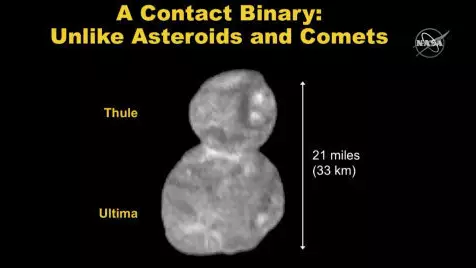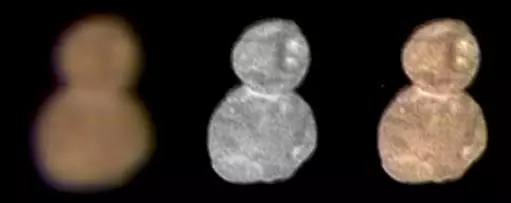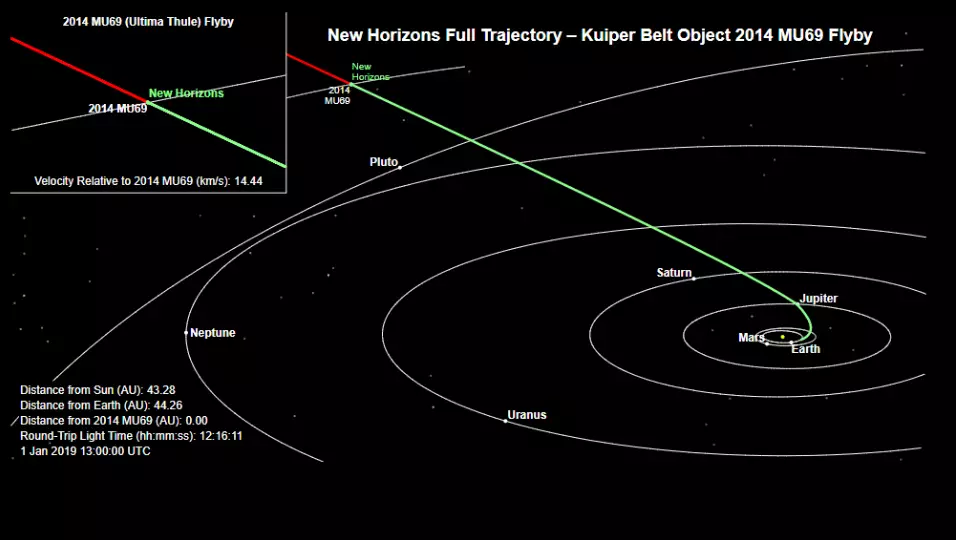
Nasa has shared new pictures of Ultima Thule - and it turns out it looks a bit like a snowman.
There isn't a giant solar carrot nose or space coal buttons or anything like that, but it definitely looks a bit like a snowman. Quite fitting really, for an icy world, 6.5 million km from earth.
Advert
The picture's were captured by the space agency's New Horizons probe, which has broken the record for most distant exploration of a solar object. The broken record was also previously set by the same probe, after it passed Pluto in 2015.
Images captured on the approach indicated that the space object, located in the Kuiper belt, may be formed of two separate bodies - and pictures from a closer flyby have confirmed this. The mission team have decided to name the larger mound (or the body) Ultima, and the smaller mound (or the head) Thule. The volume ratio is about three to one, which incidentally is the optimal size difference when snowman building.

Jeff Moore, a New Horizons co-investigator from Nasa's Ames Research Center, said the mounds would have merged at speeds of around 2-3km per hour, the BBC reports.
Advert
One of the reasons the area is of such interest to scientists is because of its super low temperatures (it's actually way too cold for snowman building), which has resulted in a preservation that could answer questions about how things came to be.
But don't take it from me, take it from New Horizons' Principal Investigator, Alan Stern, who actually knows what he is talking about.

According to the BBC, he said: "Everything that we're going to learn about Ultima - from its composition to its geology, to how it was originally assembled, whether it has satellites and an atmosphere, and that kind of thing - is going to teach us about the original formation conditions in the Solar System that all the other objects we've gone out and orbited, flown by and landed on can't tell us because they're either large and evolve, or they are warm.
Advert
"Ultima is unique."
Scientists will have to be patient though, as it will take around 20 months for the probe to send back all of the information it has gathered during the flyby of Ultima Thule. To be fair though, that's not a bad ETA, considering it's 6.5 million kilometres away.
Featured Image Credit: PA/NasaTopics: World News, Interesting, Technology, space